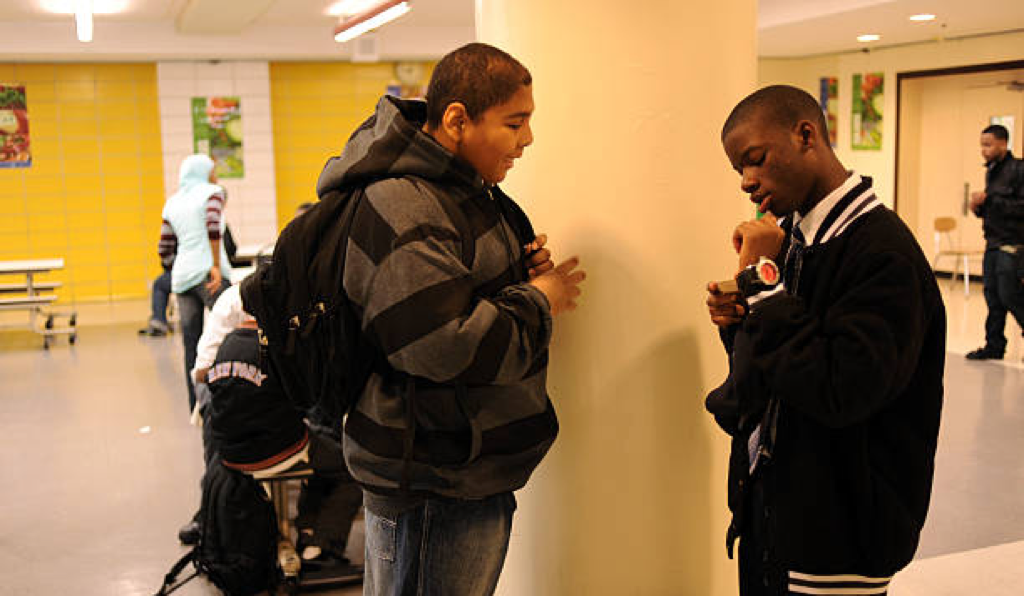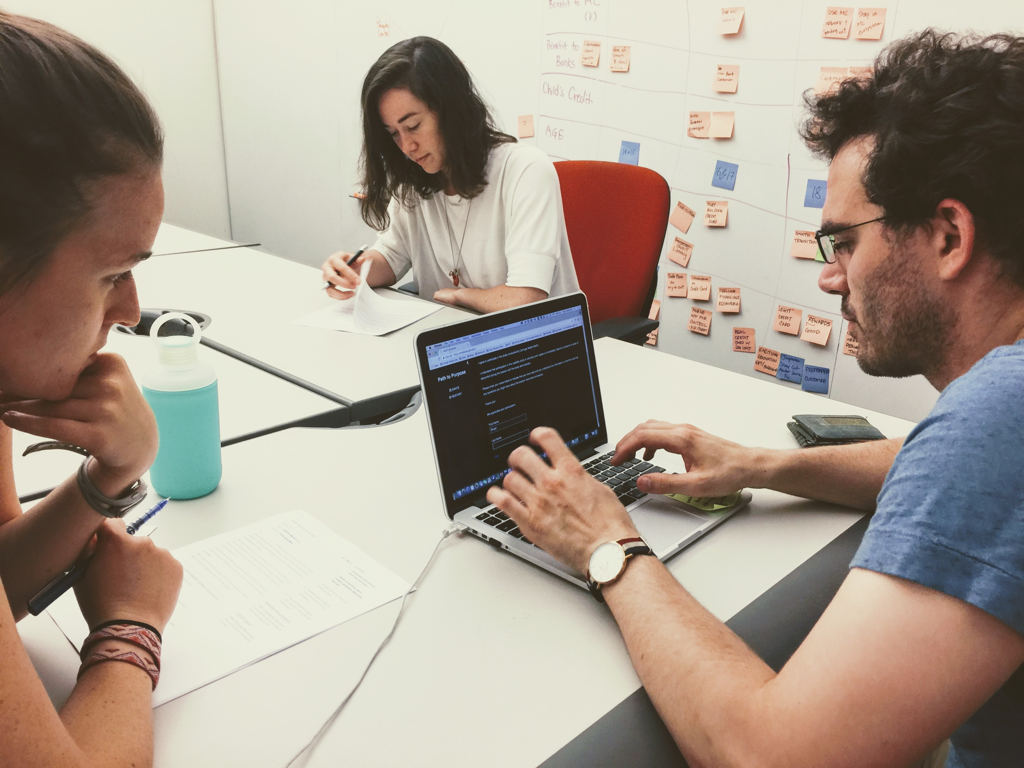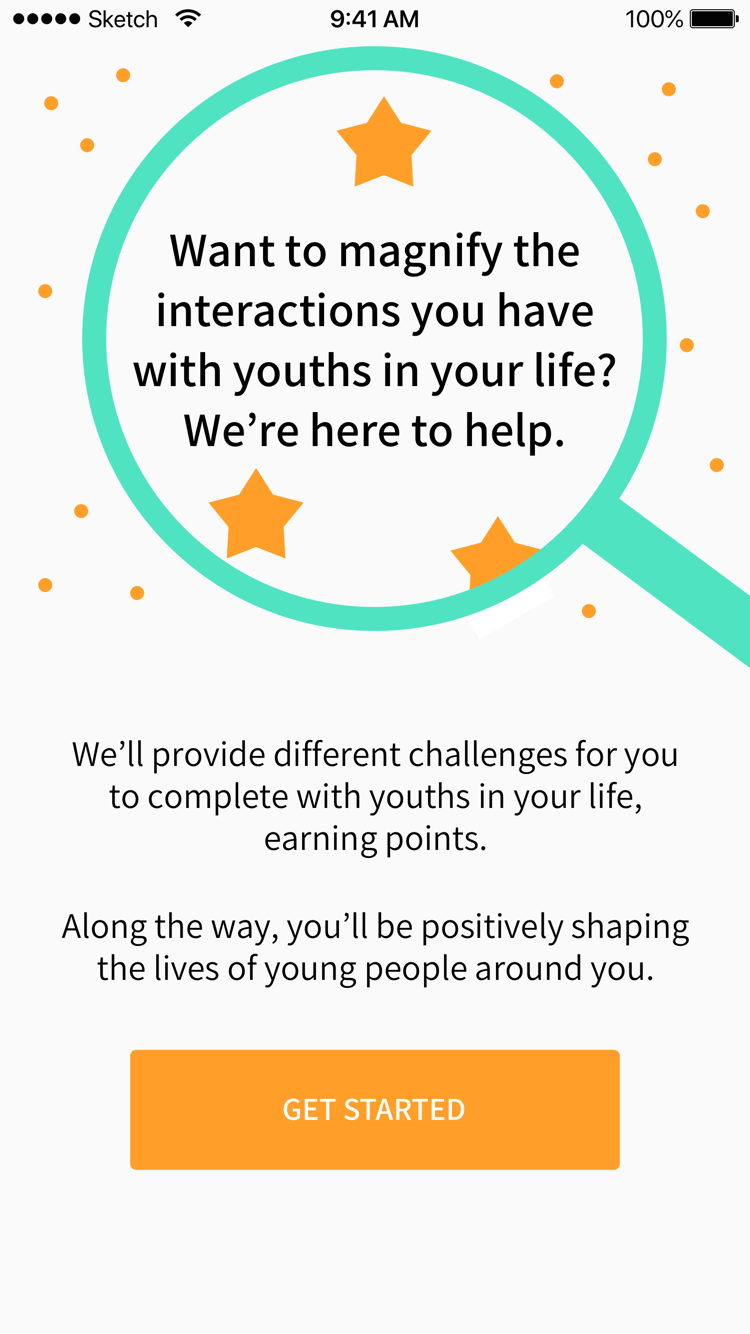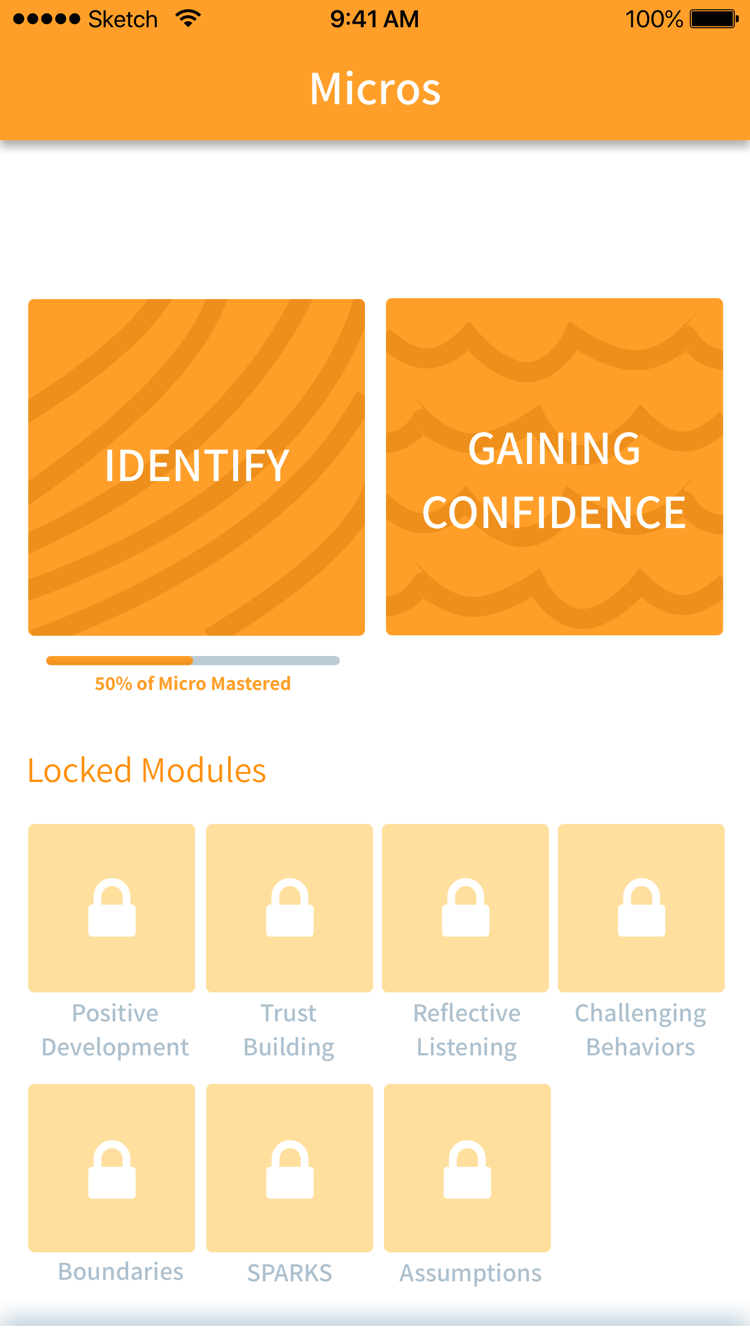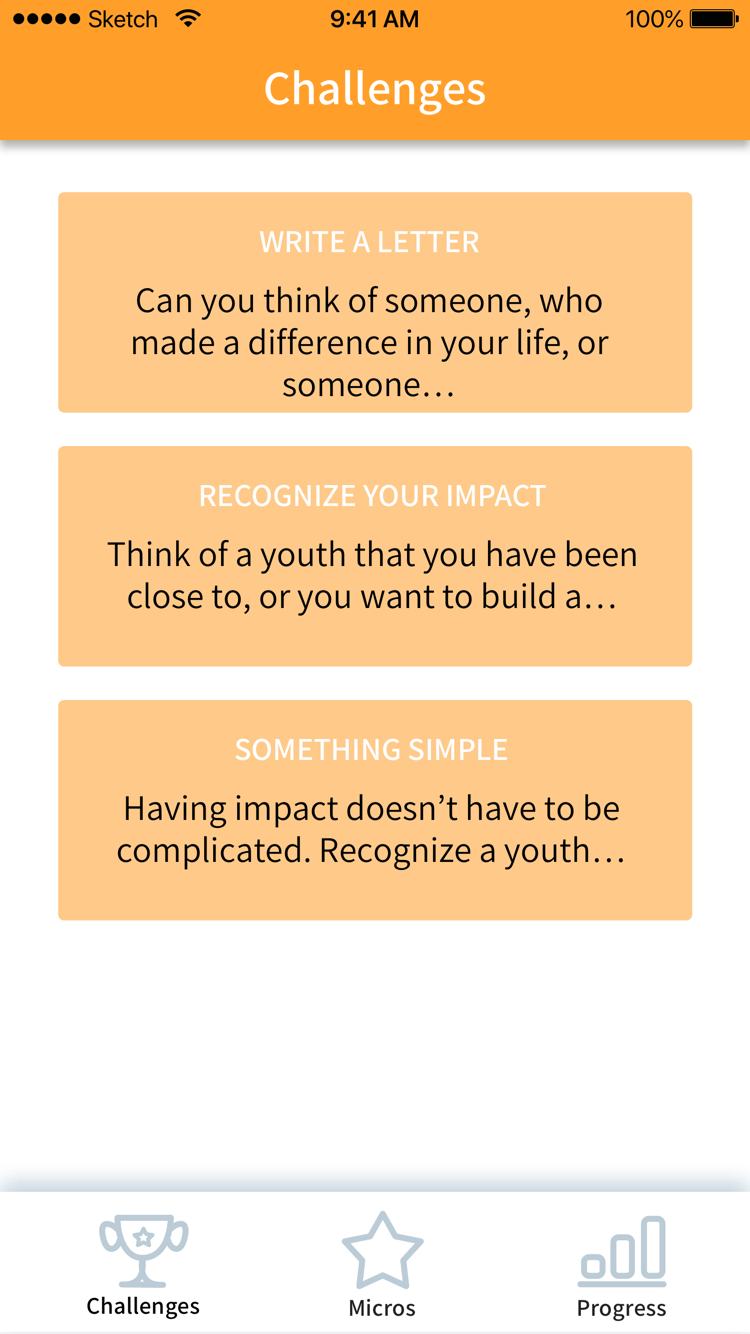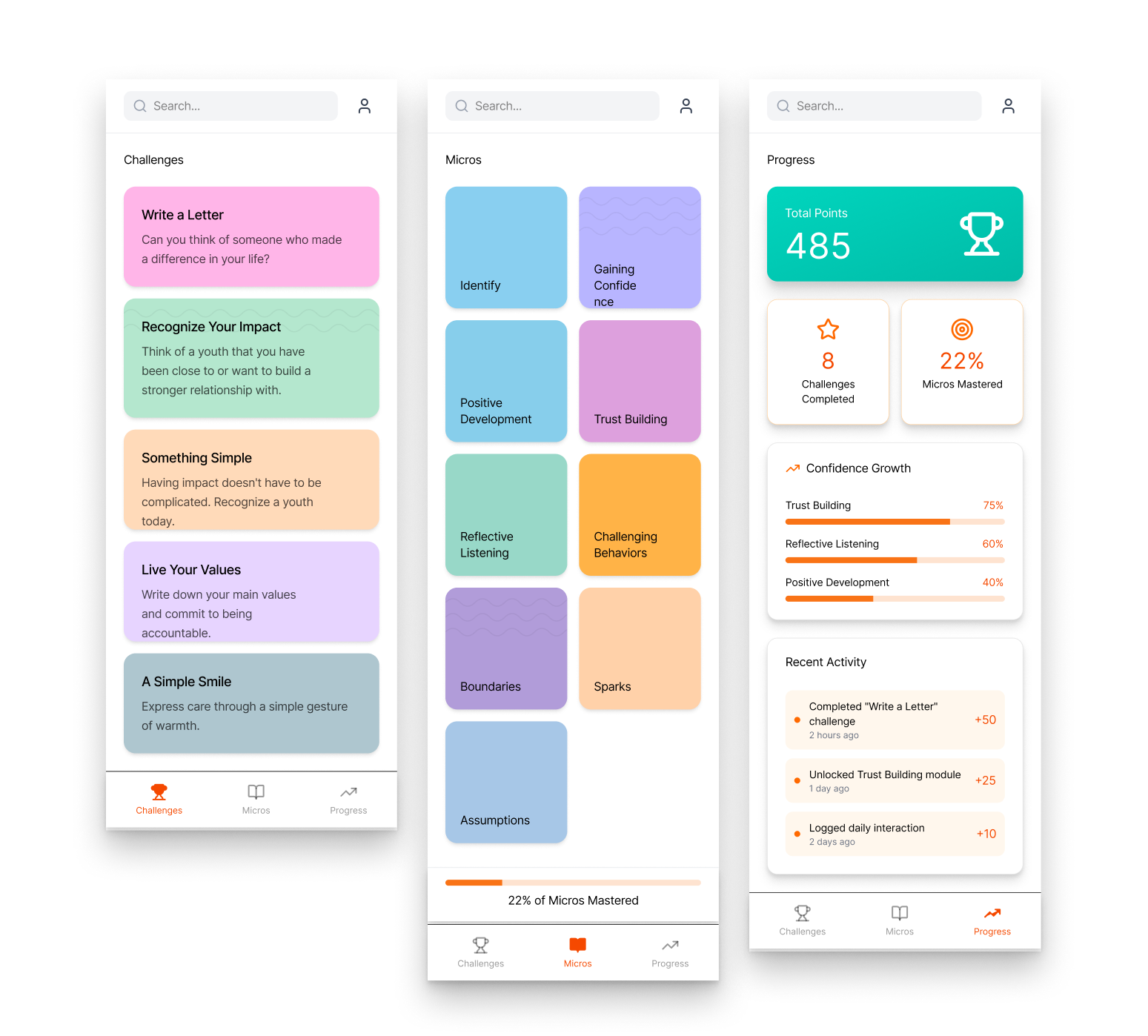Designing the Future of Youth Mentoring
Every year, around 800 young people in Western Pennsylvania end up on waiting lists for mentoring programs.
The Mentoring Partnership came to us with a goal: expand quality mentoring in Western Pennsylvania and beyond without sacrificing what makes it effective.
The opportunity: Adults already in young people's lives—teachers, coaches, librarians—who don't see themselves as mentors yet. The Mentoring Partnership calls them "Everyday Mentors."
Timeline: 8 months
Team: 1 Product Designer, 1 UX Engineer, 1 UX Lead (Me), 1 UX Researcher, 1 UX Specialist
My role: As UX lead, I drove the project forward, communicated with our client, and shaped our overall project approach and strategy. I planned design workshops and visioning activities for each section of the project. I also helped design the app alongside our Product Designer, contributed to visual artwork for deliverables, and assisted with UX Research & Testing.
The Core Questions
Can we help potential mentors see themselves as mentors and train them to work effectively with young people?
Through early conversations with The Mentoring Partnership, we identified additional critical issues:
Awareness: TMP has an Everyday Mentoring training program, but people don't know about it
Quality: It's easy to scale mentor training at the expense of quality, which TMP refuses to do
Measurement: TMP has no way of measuring engagement or retention after initial training
Research: Understanding What Makes Mentoring Work
None of us had formal mentoring experience (I had taught high school students, and another of us was a summer camp counselor, but none of us had had formal mentor training), so we needed to dive deep. We used multiple research methods to gain insights we could target in design.
Literature Review + Competitive Analysis
We started by reviewing all literature from our client, supplementing with academic research about best practices and current technology use in mentoring. I led the team through a process called Conceptual Blockbusting after our literature review to discover what we had learned and what we still needed to learn.
Interviews & Observations
With a better understanding of the mentoring landscape, we met with 30 different mentors and mentees and visited 6 mentoring organizations across the country to understand the current state of mentoring and the problems that exist firsthand.
Four Key Insights
Unexpected
The term “mentor” comes with a weight of expectations that differs from person to person. Our interviews revealed the label “mentor” implied something different depending on who was asked. Youth view the word “mentor” to be synonymous with “therapist.”
“The word ‘mentoring’ at some of my schools, the kids are like, ‘Oh, why do you need that?’ They view is as therapy.”
Untethered
Just as mentees turn to their mentors for help in their lives, mentors seek help from others when they need assistance in their mentoring relationships. Our interviews revealed that this assistance to mentors came from many sources: friends, family, or program staff (if available).
“I don’t know everything there is to know about being a mentor, and I want someone to be there to support me.”
Unaware
While mentoring can inherently make a mentor feel good, seeing the impact on their mentee’s life is what makes it all worth it. In our interviews, we heard that seeing the short-term impact of mentoring incentivizes mentors to continue putting in the effort to volunteer.
“Sometimes it was as simple as seeing the young girl I was mentoring get a C on her math test instead of a D. I felt awesome even though it didn’t seem like that big of a change.”
Untapped
People who are driven to mentoring are going to do it with or without formal training. One mentor reported that he always starts a conversation by simply asking the youth how their day is going and gauges from their what he can do to offer support. Although he had formal mentoring training in the past, he hadn’t had recent training.
“I do it by myself… A lot of these programs— it’s really hard to get in for these kids who really need it, so I just kind of do it.”
Designing the Experience
Through our research, we honed in on our untapped source: people who currently have relationships with young people but don't identify as mentors. We needed to activate them using accessible technology, straddling the practical (a solution TMP could develop immediately) and the visionary (blueprinting the digital future of mentoring).
Experience Visioning
I led the team through a series of rapid journey sketching exercises to identify areas of opportunity and resonant pieces to include in our digital solution.
The EM2025 Framework
Out of our research insights and initial visioning, we created a roadmap for the next few years of youth mentoring. Our vision, EM2025 (Everyday Mentoring in the year 2025), empowers adults to be mentor-like in their everyday interactions with youth.
This wasn't just about making training accessible. It was about creating the right incentives, support, and positive reinforcement to foster a habit of mentoring.
We mapped the future user journey into four phases: Awareness → Buy-In → Learn by Doing → See Impact
Design Sprint
Using Google Venture's Design Sprint methodology, I led the team through a series of design sprints that allowed us to focus on one aspect of the journey where we thought we could deliver the most impact with a digital solution.
Each team member contributed ideas, from which we narrowed through dot voting to determine the best ideas toward solving our problem.
Each member of the team contributed a wide variety of ideas, from which we narrowed to build and test.
Prototyping and Testing
We used prototypes to test the assumptions embedded in our designs. We grouped and prioritized each set of assumptions before choosing the right prototyping method to solicit the feedback we needed.
After 32 user testing sessions, we iterated on our designs based on what we learned.
Buy-In: Personalized Onboarding
To help potential Everyday Mentors understand their role and the purpose of everyday mentoring training, we front-loaded foundational information through an easy, personalized onboarding process.
After talking with and observing over 50 different mentors, we knew Magnify had to cater to every different type of mentor and their unique needs and goals.
Our onboarding allows users to:
Identify areas where they want to gain skills
Indicate their level of mentoring experience
Learn by Doing: Micro-Training Lessons
Micro-training lessons are built into Magnify and crafted from The Mentoring Partnership's existing Everyday Mentoring training materials.
Each lesson focuses on a single skill of Everyday Mentoring and is delivered in four interactive steps. Each lesson required focused UX microcopy that both informed and engaged the user.
This training flow went through multiple iterations based on feedback from our 32 user testing sessions. We discovered how important the act of reflection was in the training process—the forced pause resonated with users as a chance to think about where skills could be applied in their own lives.
Prototype
Play with a more modern vibe-coded prototype
The Impact
Magnify gave The Mentoring Partnership a practical solution while blueprinting the digital future of mentoring. It activated the untapped potential of everyday mentors and built sustainable mentoring habits, all while maintaining the quality that makes mentoring work.
See Impact: Data & Gamification
Data drives strategy in almost every organization. The ability for Magnify to track mentoring interactions and provide a data-driven view of impact was crucial for the future success of Everyday Mentoring and The Mentoring Partnership's efforts.
Magnify uses simple gamification design techniques to:
Track user confidence
Show users their place in the mentoring community
Gather mentoring interaction data nationwide
The Solution: Magnify mobile app
A mobile app that places Everyday Mentor training within the context of people's lives.
While EM2025 is a blueprint that can take on many implementations over time, Magnify is our vision of how EM2025 can be implemented within the next 2 years.
It builds a steady habit of mentoring while making users aware of their impact and gathering data for TMP about mentoring interactions nationwide.



